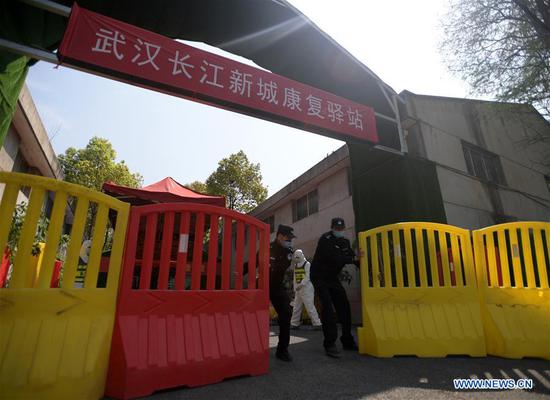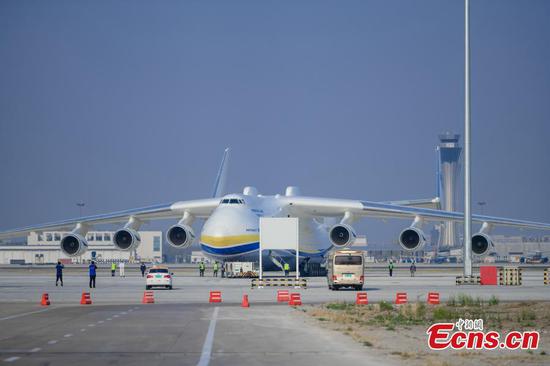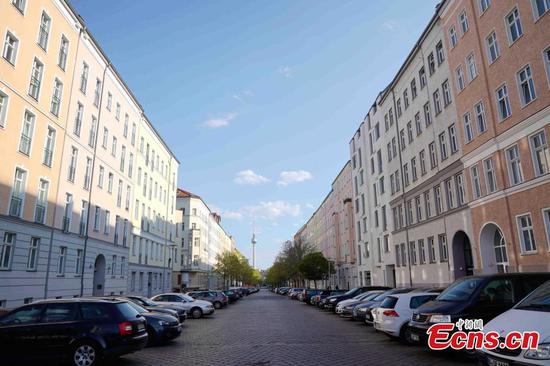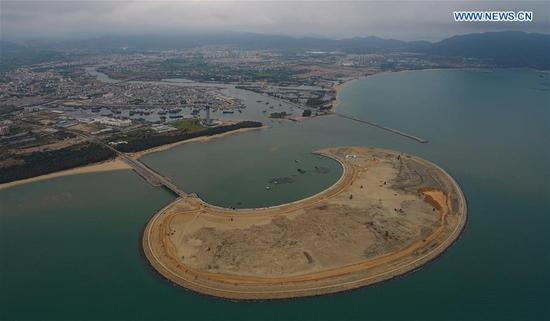China's economy will likely grow at 1.2 percent this year and rebound strongly to 9.2 percent in 2021, the International Monetary Fund predicted Tuesday, as it said the COVID-19 would precipitate global growth into the deepest recession since 1930s but a recovery of 5.8 percent is expected if the pandemic fades.
"Global growth is projected at –3.0 percent in 2020, an outcome far worse than during the 2009 global financial crisis," the IMF said in World Economic Outlook released Tuesday. It added that there was "extreme uncertainty", and the situation could get much worse.
"The Great Lockdown", as the IMF called the global downturn, is the worst since the 1930s Great Depression.
The growth forecast is marked down by more than 6 percentage points relative to IMF's projections in October and January, which is an "extraordinary revision" over such a short period of time, according to the IMF report.
The report was released during the annual spring meetings of the IMF and World Bank that are taking place virtually April 14 through April 17.
The IMF predicted a partial rebound in 2021, with the global economy growing at 5.8 percent.
"This recovery in 2021 is only partial as the level of economic activity is projected to remain below the level we had projected for 2021, before the virus hit," Gita Gopinath, the IMF's chief economist, told reporters via a video link.
The economy of the United States, which has the largest numbers of both infections and deaths of the novel coronavirus, is projected to contract by 5.9 percent this year, and is poised to bounce back to 4.5 percent next year, the IMF said in its report.
Unlike the US and other major economies, Asia is likely to be the only region with a positive growth rate in 2020, though, averaging at 1 percent, the growth is more than 5 percentage points below its average in the previous decade, the IMF said.
The 186-member lender institution forecast a subdued 1.2 percent of growth for China for the whole of 2020, even the country experiences a sharp rebound in the remainder of the year with sizable fiscal support.
It was a sharp reduction from 6 percent growth predicted in the IMF's January forecast.
India is another country expected to be spared from recession in 2020 with a projected growth rate of 1.9 percent.
The IMF said that indicators in China, such as industrial production, retail sales, and fixed asset investment, suggest that the contraction in economic activity in the first quarter could have been about 8 percent year over year.
But the world's second-largest economy is expected to lead the economic recovery in the region. The IMF predicted China's growth to bounce back next year with 9.2 percent, a rarity for a decade. The last time the Asian country posted a similar growth rate was in 2009.
The rebound in 2021 depends critically on the pandemic fading in the second half of 2020, allowing containment efforts to be gradually scaled back and restoring consumer and investor confidence, according to the IMF.
Amid further containment of the COVID-19, China is powering ahead in returning to work and resuming business and production.
About 98.7 percent of China's manufacturing enterprises have reportedly resumed work, and the purchasing managers' index for China's manufacturing sector rose to 52 in March from 35.7 in February, the Xinhua News Agency reported on April 10.
There are many variables at play during a recovery, the IMF said. For example, if a therapy or a vaccine is found earlier than expected, social distancing measures can be removed and the rebound may occur faster than anticipated.
Still, the IMF cautioned the recovery of the global economy could be weaker than expected after the spread of the virus has slowed for a host of other reasons.
These include lingering uncertainty about contagion, confidence failing to improve, and establishment closures and structural shifts in firm and household behavior, leading to more lasting supply chain disruptions and weakness in aggregate demand.


















































